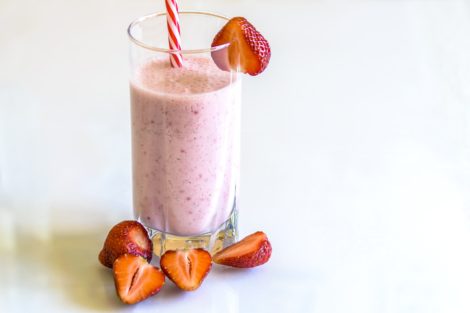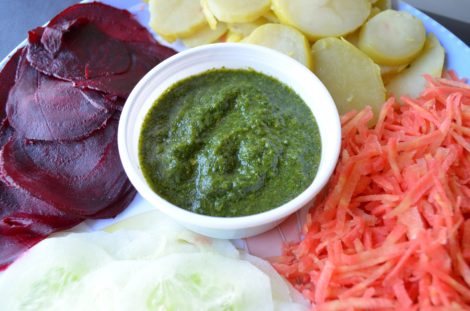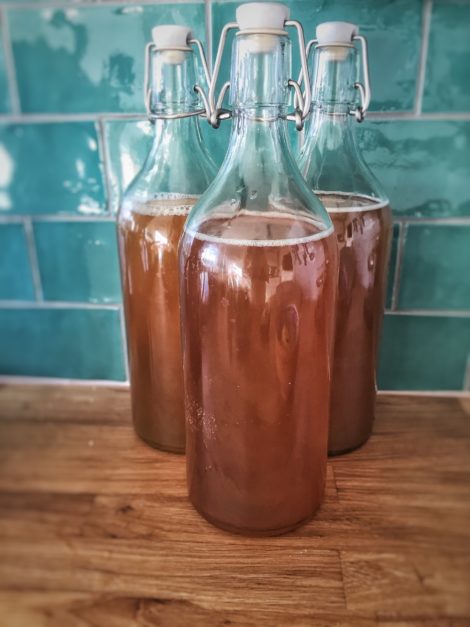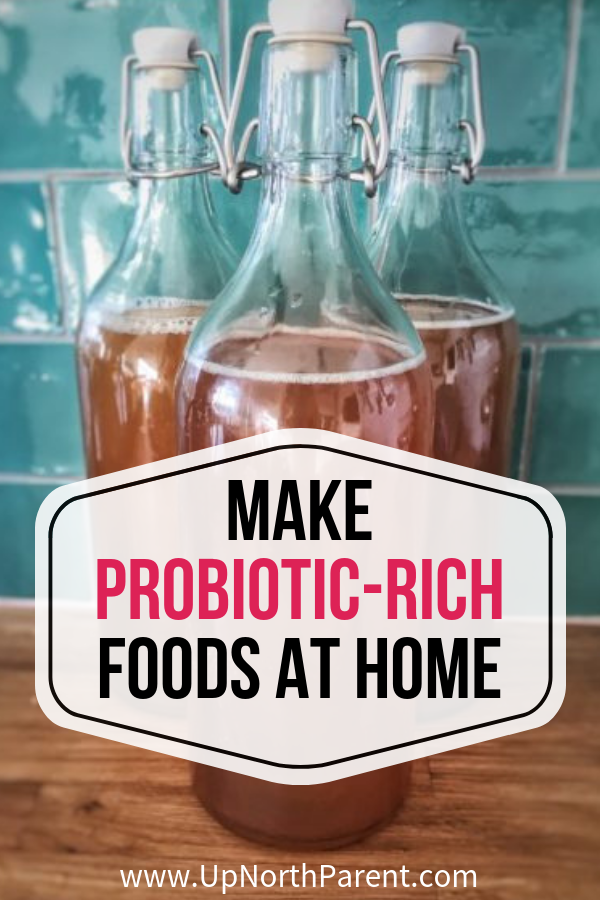**These posts often contain affiliate links. Please see our disclosure policy for details.**
Guest Post by Jean Larson licensed and registered dietitian at Essentia Health, one of Up North Parent’s Sponsors.
Did you know about 70 percent of your immune system resides in your gut?
Probiotics are beneficial bacteria that live in our digestive tract and help digest food, synthesize vitamins and support our immune systems. Eating more foods packed with probiotics during cold and flu season may lessen the impact of the common cold. According to a systematic review from the British Journal of Nutrition, certain probiotics strains, Lactobacillus and Bifidobacterium, were found to lessen the duration of respiratory infections in adults and children.
To maintain a healthy digestive tract and immune system, it’s helpful to consume probiotic-rich foods or even take supplements. These foods contain live bacteria cultures or have been fermented with benign bacteria.
Fermentation has been used throughout history as a way to preserve food. But don’t confuse fermentation with pickling. Both are forms of food preservation, but pickled food won’t provide the probiotic benefits.
Fermentation occurs when bacteria convert carbohydrates and sugars in whole food items (like vegetables or milk) to an acid that helps preserve the food. To get the maximum benefits from fermented foods, read product labels and choose only those that contain “active, live cultures.” Raw and unpasteurized is best unless you have a compromised immune system.
Probiotic foods are easy to come by in supermarkets these days. You’ll find them in the produce section. Select foods that have been refrigerated and say they have live cultures or have not been pasteurized since the heat of pasteurization kills the good bacteria. It’s also simple and inexpensive to make probiotic foods at home.
Sources of probiotics include:

Sources of natural probiotics
- Fermented vegetables: sauerkraut, kimchi, pickles, beets, carrots
- Fermented fruits: chutneys, jams, green papaya, pickled jackfruit
- Yogurt, kefir, sour cream, buttermilk with live and active cultures (pick plain and no added sugar)
- Kombucha, a fermented beverage
- Fermented condiments: homemade ketchup, relishes, salsas, and pickled ginger
- Water kefir, coconut milk kefir
- Homemade coconut milk or cashew yogurt
- Beet kvass, a fermented beet juice
- Natto, miso, tempeh and tamari sauce
Making Probiotic-Rich Foods at Home
Breakfast

- Scramble eggs with fermented salsa or top with fermented hot sauce or kimchi.
- Swap juice for a glass of beet kvass.
- Make a smoothie with unsweetened kefir or yogurt.
Lunch or Dinner

- Add fermented pickles to tuna, salmon, egg or chicken salad.
- Serve your salad with a side of kraut, fermented beets or fermented chutney.
- Top tacos with fermented jalapeno slices.
Snacks

Kombucha
- Combine kefir with frozen berries.
- Cut up veggies and serve with a kefir dill dip.
- Enjoy a glass of kombucha.
Making Probiotic-Rich Foods at Home | Super Kraut
(It’s adapted from “Wild Fermentation.”)
Green Cabbage, Carrot and Ginger Kraut
1 head green cabbage
2 tablespoons grated ginger, or more to taste
10-ounce bag organic shredded carrots
1 tablespoon sea salt
Wash two 1-quart wide-mouthed mason jars with soap and very hot water or sterilize the jars with hot water.
Remove the outer leaves of the cabbage and scrub the outside of the cabbage. Chop or shred cabbage into fine ribbons (the finer the chop, the more juices that will be released). Combine with shredded carrots and grated ginger.
Salt the vegetables lightly. Squeeze the salted vegetables with your hands until the cabbage is soft and has released a pool of juice at the bottom of the bowl. (You may choose to divide the shredded vegetables into two batches).
Pack the vegetables into your prepared mason jars. Press them down with force so that air pockets are expelled and the juice rises over the vegetables. Place one of the outer cabbage leaves over the top of the packed vegetables, fold the leaf, and press down, submerging it fully under the liquid to prevent loose pieces from floating to the surface.
Screw the top on to each jar. Each day, release the pressure caused by the gas from fermentation by loosening the jar lids to “burp” the kraut.
Allow the kraut to ferment three days to three weeks, tasting along the way. Flavor and texture will change, becoming more acidic and softer with longer fermenting times. If you’d like to slow fermentation, move to the refrigerator and enjoy within a few months.

 Jean Larson is a licensed and registered dietitian at Essentia Health.
Jean Larson is a licensed and registered dietitian at Essentia Health.
Essentia Health is guided by the values of quality, hospitality, respect, justice, stewardship, and teamwork.
From emergency care to convenient care, family care to speciality practice, Essentia Health delivers on its promise to be “Here With You” in the Brainerd Lakes Area. Learn more at www.essentiahealth.org.





I love this! Fermented foods are so delicious, and I think its great that they are so good for you. Thanks for the ideas!
Agreed! It took me (becky) awhile to like things like Kaboucha, but now I love it 🙂